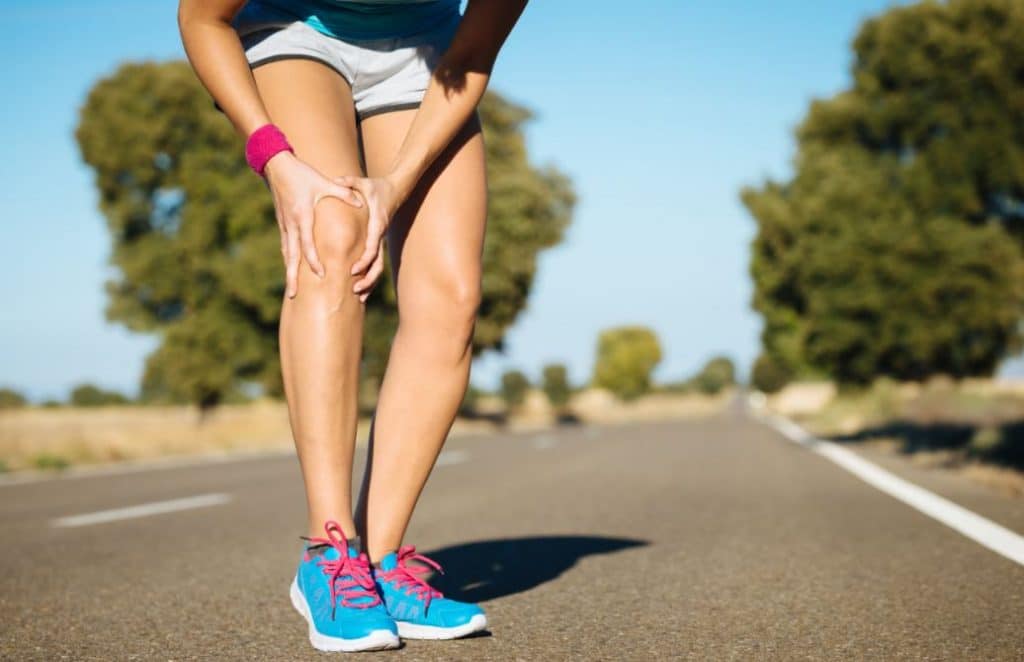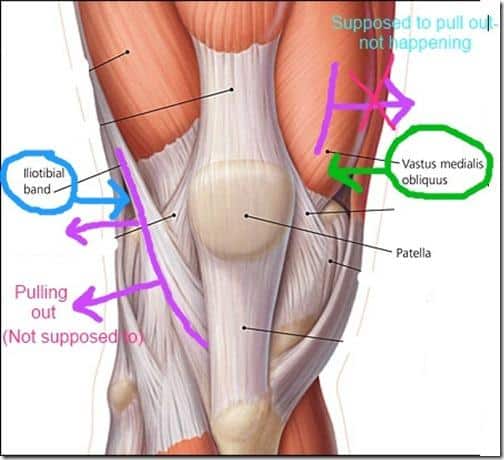Runner’s Knee

With the gym’s closed, many of you might find yourself trying to exercise at home and outside and many of you have began or thought of running or walking outside now that the weather is finally cooperating. AND FINALLY, many of you might feel pain in your knee(s) during and after running.
In fact, 25% of the general population suffers, or has suffered, from a little known cause of knee pain called patellofemoral pain syndrome. It is the most common overuse knee injury among runners, and it can account for up to 40% of the knee complaints in sports medicine clinics. This makes Patellofemoral Pain Syndrome the most common knee pathology when it comes to knee injuries in runners.
PATELLOFEMORAL PAIN SYNDROME, RUNNER’S KNEE, CHRONDROMALCIA
Patellofemoral Pain Syndrome is often called Runner’s knee and sometimes called Chondromalcia. Chondromalcia means “softening of the cartilage under the knee cap; however, This term is not used much anymore as there is no real softening.
- It is one of the most common causes of knee pain in all age groups, including teens and young adults.
- Common in runners, yet is seen in soccer players, gymnasts, cyclists, rowers, tennis players, ballet dancers, basketball players, and volleyball players.
CAUSES OF RUNNER’S KNEE
Runner`s knee is due to an irritation and side-to-side movements of the kneecap (patella) on the groove in the femur. Possible causes include:

- Poor kneecap tracking (maltracking) – the common cause
- Weak Quadriceps.
- Imbalanced Quadriceps.
- Weak Hamstrings
- Tight Iliotibial Band.
- Weak Hip Abductors
- Tight iliotibial band.
- Neuromas.
- Bursitis.
- Overuse.
SYMPTOMS:
- Pain: in front, around or beneath the kneecap. The pain is usually perceived maximally when the knee comes to within 15-20 degrees of full extension.
- More pain and/or feeling of joint instability after climbing stairs, jumping rope, running, or after a prolonged sitting, like for a movie, and so it is also called “movie sign” or “theater sign.
- Sometimes a clicking, cracking or crunching sound is heard when the knee is bent or straightened. This is the kneecap slipping back into the groove.
TREATMENT:
- RICE.
- Activity modification: avoid activities that cause extra stress on the knees such as squatting/kneeling or high impact activities like running until the pain subsides. Swimming is safe.
- Anti-inflammatory medications: PRN (Pro Re Nata); a Latin phrase meaning “if neededâ€.
- Therapeutic exercises/ physiotherapy.
- Electrotherapy
- Low Level Laser Therapy
- Ultrasound Therapy
- Radial Shockwave Therapy
- Cryotherapy
- Osteopathy
- Taping of the knee.
- Proper Foot Wear: e.g. Shoes with an arch support to control over pronation, shoes with adequate cushioning in sole to help absorb shock. Orthotics may be required for those with severe over pronation. Limit the time spent wearing high heels.
- Knee brace.
- Surgery.
QUARANTINE TREATMENT
With limited treatment options available, these are a few home treatment options which you can implement.
- RICE (REST, ICE, COMPRESSION, ELEVATION)
- However, only ice PRN (if needed) directly after running or exercising. Do not ice before exercise.
- TENS – before, after exercising and PRN throughout the day. I find a combination of Heat over TENS before exercise and Ice with TENS after exercise really helps with pain management.
- Natural Vasodilation/ Vasoconstriction:
- Heat and ice both work using the same mechanism by changing the amount of blood flow to the affected area, but with opposite results. Â When ice is applied to tissue, the blood vessels in that area will get smaller. Â This is called vasoconstriction and decreases the amount of blood that can reach the tissue. Â When heat is applied, the blood vessels in that area will get wider. Â This is called vasodilation and will increase the amount of blood that can reach the tissue.
- I find this a great method to reduce acute and chronic inflammation, reduce pain, and increase the speed of recovery.
- METHOD: Do the following in sequential order, ending with only 2 minutes ice.
- 10 min ice, followed by 10 min heat
- 8 min ice, followed by 8 min heat
- 6 min ice, followed by 6 min heat
- 4 min ice, followed by 4 min heat
- 2 min ice, followed by 2 min heat
- 2 min ice
- Direct ice – Freeze a styrofoam or dixie cup with water. Peel away an end so ice is showing and you have a “handle” on one end. Directly massage the ice on the most painful area in small, continuous circles so the ice melts on your skin. IT WILL BE COLD AND SOMETIMES PAINFUL. Do this for no longer than 2 minutes as doing it for longer will put your skin at risk for complications.
- This tricks the cells into thinking they need to constrict and protect themselves for “survival”. Almost like how cells react when someone falls into a frozen lake. As soon as the ice is over, the cells realize they need to “save” the area by increasing oxygen and blood supply to the area which will help speed up recovery of the injured area.
- Home Exercises:
- https://theprehabguys.com/patient-portal/?playlist=YOVZMYZE
- Even if you do not suffer from Patellofemoral pain syndrome, try some of these exercises out to help prevent it. For prevention, I like to look at glute strength, hip stability, and knee stability. A good exercise for knee control is the Terminal Knee Extension.
If you have any questions, comments or concerns, please let us know and we will try and help as much as we can during this time.
Again, for the most up-to-date information follow us on Facebook and Instagram. @CCCOsteopathy and @CommunityChiropracticCenter
Sources:
- Sports Health, May/June 2013
- https://www.ncbi.nlm.nih.gov/pubmed/6546108
- National University of Medical Sciences


